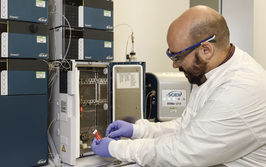Exploring the relationship between molecular characteristics and bulk rheological properties of biodegradable polymers

contributed by Malvern Panalytical |
Molecular and bulk characterization of PLA and PLGA samples using multi-detector GPC and rheometry
Exploring the relationship between molecular characteristics and bulk rheological properties of biodegradable polymers
Introduction
Poly(lactic acid) (PLA) is a biodegradable polymer derived from natural resources (corn starch), that has received significant attention in recent years. It is one of the most prevalent biodegradable polymers in the market place due to availability, low cost of production and when derived from natural sustainable sources it is a truly renewable polymer. Lactic acid is often combined with glycolic acid to form the copolymer poly(lactic-co-glycolic acid) (PLGA) which can have varying composition of lactic and glycolic acids. Being a versatile polymer, it is used in a wide variety of applications from additive manufacture (3D printing) to disposable cutlery, biodegradable sutures, drug delivery, or as biodegradable packaging.
It is widely recognized that the bulk properties of polymers are strongly dependent on their molecular properties. Most commonly, the strongest determinant of a polymer’s strength is assumed to be its molecular weight. However, in copolymers such as PLGA, it is also likely that copolymer composition will also strongly affect those properties.
This application note uses two Malvern technologies to explore the relationship between the molecular and bulk properties of PLA and PLGA. Multi-detector GPC is used to measure molecular weight and intrinsic viscosity (which is dependent on copolymer composition), while rotational rheology is used to study meltviscosity. The two results are then compared to study which molecular properties best correlate with melt-viscosity.
Log in or register to read this article in full and gain access to The Medicine Maker’s entire content archive. It’s FREE!



















